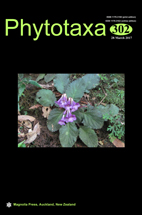Abstract
South American studies on the genus Chara are relatively scarce, most consisting of floristic surveys and using only traditional morphological characters. This study is a first approach to the systematics of the genus Chara applying modern techniques (DNA sequences and oospore SEM analyses) in addition to the alpha-taxonomy investigations that have been conducted in Brazil. Twelve populations of Chara were analyzed from the midwest and southeast regions of Brazil. Sequences of three molecular markers were applied to infer phylogenies. The ultrastructure of the oospore wall and currently used morphological characters were analyzed for Chara populations. Maximum likelihood and Bayesian analyses of sequences of rbcL, ITS2, and matK were congruent in that they grouped the species in six clades, each representing one species: Chara braunii C.C. Gmelin, C. foliolosa C.L.Willdenow, C. guairensis R.Bicudo, C. haitensis M.P.J.F. Turpin, C. hydropitys H. Reichenbach and C. rusbyana M. Howe. Morphological characters, including ultrastructure of oospore wall, provided good evidences to characterize each species. Molecular data supported the recent view that some traditional infra-generic taxa (e.g. subgenus Charopsis and subsection Willdenowia) are not supported in phylogenetic analyses, whereas some species (e.g. C. foliolosa, C. haitensis, C. hydropitys and C. rusbyana previously considered as varieties and forms of C. zeylanica) were consistently distinguished in the analyses for the three molecular markers.

